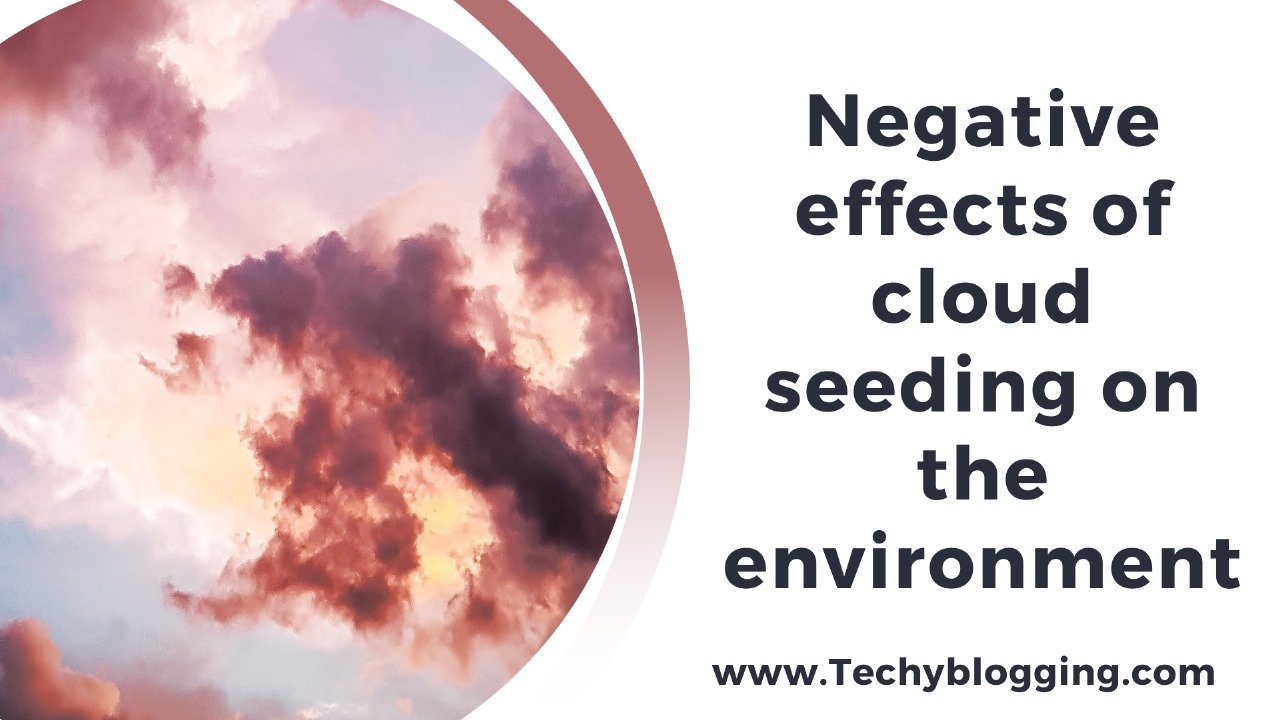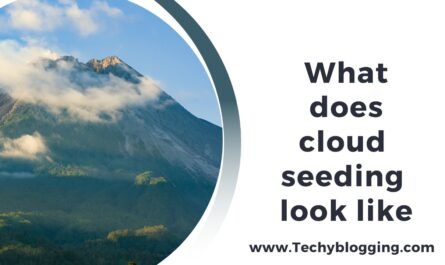Cloud seeding is an atmospheric alteration technique that aims to increase rainfall by distributing substances in the air. Though it may impart benefits, like increased rainfall or reduction in drought, it has its own controversy and environmental impacts that could be a concern. This article examines the negative impacts of cloud seeding on the natural environment by analyzing the chemical, ecological and socio-economic impacts.
Understanding Cloud Seeding
Cloud seeding usually involves the injection of substances like silver iodide chloride or dry ice in clouds to promote precipitation and condensation. This technique is gaining traction in diverse regions that face water shortages, but its implications for the environment merit a careful analysis.
The Mechanism of Cloud Seeding
In order to understand the effects that could occur the potential impacts, you must understand how cloud seeding operates. As particles enter the air, they function as a nucleus around which moisture is able to condense. This can result in more rainfall. But the efficiency and effectiveness of cloud seeding remains the subject of debate and research.
Ecological Disruption

Alteration of Local Ecosystems
One of the biggest questions regarding cloud seeding concerns the possibility of it disrupting local ecosystems. In the process of altering the climate patterns cloud seeding could alter patterns of rainfall and its distribution of flora and fauna subject to specific conditions of the climate.
Impact on Flora
Variations in the rainfall could result in an imbalance of the local plant life. In the case of cloud seeding outcome in excess rainfall in regions that are dry and it encourages the development of invasive species, which can outcompete native vegetation. However, in places which receive less rainfall than is expect, drought stress may weaken native vegetation which can impact the diversity of species.
Impact on Fauna
The populations of animals dependent upon specific plant species or climatic conditions could also be affect by changes in rainfall patterns. The species that have adapted to a particular environment may find it difficult to live in a situation where their environment is altered due to changes in rainfall. In particular the aquatic species could encounter increased nutrient and sediment loads in their waters as a consequence from increased rainfall. This could lead to algae blooms and lower oxygen levels.
Water Quality Concerns
Cloud seeding can introduce substances into the atmosphere which raises questions about their possible effects on the water’s quality.
Chemical Contamination
The most frequently used chemical known as silver iodide an element that is heavy and can build up in the environmental. Some concerns have been express regarding the dangers of this metal to aquatic organisms as well as the possibility of bioaccumulation within food chains. When precipitation is reduce the chemicals could enter water bodies, lakes and groundwaters, causing the contamination of drinking water sources.
Effects on Soil Quality
Cloud seeds can have a negative impact on the health of soil. Chemical residues could alter the composition of soils and negatively impact microbiome communities, which are vital to nutrients cycle and plant health. These changes can have negative long-term effects for agriculture as well as the natural ecosystems.
Climate Feedback Loops
Unintended Weather Patterns
Cloud seeding may inadvertently cause feedback loops within local climates. Through altering the pattern of precipitation this practice could result in changes to the humidity and temperature, which could in turn affect weather patterns.
Drought and Flood Cycles
In areas that are prone to drought, seeding clouds could impart temporary relief but could cause longer-lasting drought flood cycle. As an example, the increased amount of precipitation in one season could cause dry spells in the following seasons due to the fact that the balance of rainfall is disrupted. The cyclical patterns may be damaging to agriculture as well as water resources, which makes longer-term planning difficult.
Contribution to Climate Change
Although cloud seeding is typically thought of as a quick fix to water depletion however, the impact it has on changes in the climate is a major issue. The change in weather patterns may exacerbate already complicated dynamics of the climate system, and may lead to more extreme weather such as storms, heatwaves, droughts.
Social and Economic Implications
Public Health Concerns
The chemicals that are use for cloud seeding can cause health problems for the local population. For instance, silver iodide is associated with different health concerns, among them respiratory issues when breathed in. The communities that are near cloud seeding operations might be impacted by the risks, but without understanding the possible consequences.
Displacement of Local Communities
Since cloud seeding may alter the local climate, it could cause shifts in agriculture production. Farmers who rely on certain climate patterns could experience problems with their crops or lower yields. This could result in the instability of their economy and displacement. These displacements can be detrimental to local economies as well as disrupt the traditional way of life.
Ethical Considerations
The Right to Water
Cloud seeding poses ethical issues about the rights of water. If one area uses cloud seeding in order to improve precipitation, neighbouring regions could be impacted by reduced rainfall which can lead to conflicts regarding the availability of water. Water allocation specifically in areas that suffer from drought can become a contentious topic which highlights the necessity for a fair and equitable allocation of resources shared by all.
The Role of Technology in Nature
Cloud seeding illustrates the human race’s try to influence natural processes. It raises philosophical concerns concerning the extent that we can interfere within natural systems. Potential for unintended effects is a reason to consider the relationship between technology-driven solutions and the preservation of the nature of ecosystems.
Conclusion
Cloud seeding is an attractive option to combat water scarcity or drought issues, its detrimental environmental impacts cannot be ignored. From environmental disruptions to environmental concerns regarding water quality, to moral and environmental impacts, this practice presents major challenges that require thoughtful evaluation. When we consider the complexity of environmental change and water management it is vital to evaluate the possible advantages against the potential risks and find environmentally sustainable options that respect our needs as well as the wellbeing of the planet.
Cloud seeding’s future could be contingent not just upon technological advances, but also on a better knowledge of the balance between ecology as well as ethical accountability. When we look at innovative ways for dealing with environmental problems and ensuring the health of our ecosystems and the communities we live in must be at the top of our initiatives.




